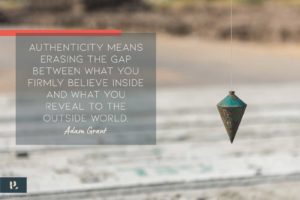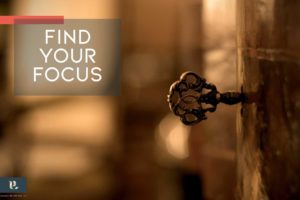“Yesterday I was clever, so I wanted to change the world. Today I am wise, so I am changing myself.”
Rumi
You decided to stop micro-managing and delegate more, and yet you find yourself with more work than ever. You decided to talk less and “share the air” more, and yet you consistently find yourself being the first person to speak up. Or … you decided to speak up and share your opinion in meetings, and yet another one goes by where you sit silently. Whether it’s at home or at work, we all have goals that we want to achieve but consistently do the opposite. It seems that, despite our best intentions, we often work against ourselves, even when the goal is in our best interests. Why do we do that?
We are fascinating creatures: the Universe’s most complex operating system, millions of “lines of code” at play, with the occasional glitch, and with constant system updates available. Like our smart phones, we are able to run multiple apps (streams of motivation) at the same time. Sometimes, however, these streams of motivation are at odds with each other, creating what Kegan and Lahey refer to as our natural “immunity to change” (Immunity to Change: How to Overcome it and Unlock the Potential in Yourself and Your Organization, 2009).
To understand our immunity to change (and ourselves) better, we need to take a peek into the black box of the subconscious mind. This is the part of our system that has the capacity to run billions of bits of information to find connections and to make sense of the world around us. When connections are made between what we are processing in the subconscious mind and what we are experiencing in our conscious mind, we get sudden insight (oftentimes while driving, showering, resting, exercising, etc.). Our natural immunity to change shows up when a goal of the conscious mind is at odds with commitments and assumptions that are “hidden” in our subconscious mind. To resolve that tension and eliminate the resistance, we need to bring those hidden commitments and assumptions into the full light of our conscious mind. Ask yourself (or better yet, work it through with your coach or other thought partner):
- What is my goal?
- How am I actively working against myself (what am I doing instead)?
- What am I committed to that makes my #2 behaviors brilliant strategies?
- What are the assumptions that #3 and #2 are built on?
These are the four questions of Kegan and Lahey’s Immunity to Change framework. They are not easy questions to answer, because they get to unexamined beliefs – meaning, right up until this conversation with yourself, you didn’t even know they were there. (That is why it is much easier to do this with a coach or other thought partner.) Here is an example, so you can see what this process looks like in real life:
Scenario
Sue has been told that she micro-manages her people. She knows this to be true, as it is feedback that she’s gotten before, and she recognizes that she is “working harder, not smarter,” because her work-week includes nights and weekends, just to keep up. To make matters more complicated, her boss has told her that she’s a candidate for a promotion, but there is concern about whether or not she has the capacity to take on broader responsibilities. Three months ago, Sue made a commitment to herself that she would do a better job delegating so that she could free up mindshare and minutes to focus on her leadership responsibilities. Today, she finds herself in exactly the same place she was 12 weeks ago. She is frustrated and beginning to doubt herself.
Using the four questions, Sue and her coach unpack her immunity to change:
1. What is my goal? To delegate more work to my staff.
2. How am I actively working against myself (what am I doing instead)?
- Doing all the work myself
- Being the primary client contact for everyone and everything
- Not taking the time to give clear direction (easier to do it myself)
3. What am I committed to that makes my #2 behaviors brilliant strategies?
- Being busy
- Working hard
- Accomplishing a lot
- Knowing every part of every project
- Being the “go to” person
Note to self: earlier in my career, these were the very things that got me noticed. They are (or at least at one point, were) good strategies.
4. What are the assumptions that #3 and #2 are built on?
- I add the most value when I am focused on tasks (getting things done)
- If I am in charge of every detail, I am the “go to” person
- If I am not in control, then something bad will happen, and it will be my fault
- Being busy equals being important
Look at the list of “hidden commitments” in #3, in contrast with Sue’s stated goal in #1. You (and now she) can see clearly how at odds with each other they are. Sue’s hidden commitments and underlying assumptions come from belief systems formed early in life that were then reinforced in her early career experience. But what Sue can now recognize is that she is operating in a new context, with greater leadership responsibilities and a new definition of what it means to create value. In order to be willing to delegate more work to her staff, Sue needs to challenge her underlying assumptions and redefine what it means to be productive and accomplished in her new role.
Each person’s immunity to change is different. Our commitments and assumptions are as unique as we are. Our best chance of getting out of our own way is to notice the outcomes we are getting and, when they are not the ones we want, to step back and take a fresh perspective on our thinking. Kegan and Lahey’s four questions give us the framework to do that. The challenge of a lifetime is to evolve continuously, and we have the gift of consciousness to do that well and intentionally. Challenge yourself to get out of your own way and level up!



